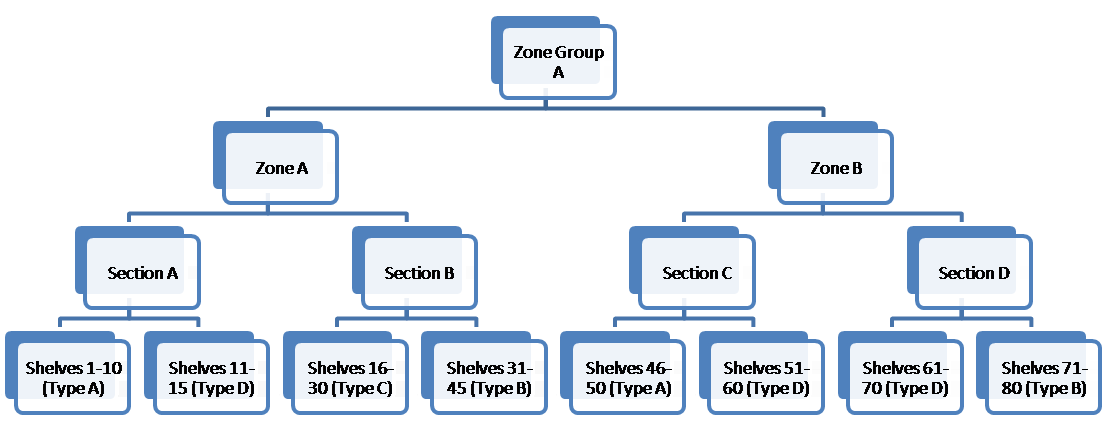The warehouse layout optimizes picking or putback times, improves picker efficiency, and facilitates easy access to deep stored inventory by well organizing storage areas. Warehouse productivity can be greatly improved by considering these factors.
Use Case:
The operator in large warehouses can have difficulty locating and picking items on time due to endless rows of storage racks spanning five to ten thousand square feet.
This problem can be overcome by dividing the entire storage area into multiple zones. These zones are then divided into several sections, which are where the inventory is physically kept.
In these sections, the seller can store a particular category of SKUs or a particular SKU, or items with same expiry date or batch number, etc.
Picklists are created zone-wise in order to minimize picking time. This means a picklist will contain items to be picked from a particular zone only. Shelf codes are used to further streamline the picking process on each shelf. The shelf codes are arranged sequentially and are basically Zone Codes-Section Codes-Shelf Codes.
To help pick items quickly and accurately, the picklist contains details like Zone Code, Shelf Code, SKU Code, and SKU image.
For small warehouses with a few hundred SKUs and limited storage space, zones and sections aren’t necessary. Consequently, a seller is limited to creating multiple shelves to keep SKUs in a warehouse, to store SKUs during putaway, and to track SKUs.
To help you understand the layout, we’ve listed all of the key components below, along with their hierarchy:

Components
Based on the above description, you must have understood by now how the layout is designed.
Zones are groups of locations with similar characteristics. In a warehouse, packages and goods are categorized into multiple zones.
Furthermore, zones are divided into multiple sections according to their attributes. Sections are used to classify locations with the same characteristics.
In a section, there are multiple shelves and each SKU has a specific zone or multiple zones, and it is stocked in the section on a particular shelf.
For example,
Electronic items (TV, Laptop) and Home decor items (Gifts, Handloom) have different attributes.
So Electronics Items are stored in zone A, further Laptops are stored in zone A section AS1 and television sets are stored in zone A section AS2.
Similarly, Home decor Items are stored in zone B. Gifts are stored in zone B section BS1 and Handlooms are stored in the bulk storage zone BS2.
For the convenience of the user, there is one DEFAULT zone group, zone, section and shelf pre-created in the system for quick use.
Shelf
A shelf in Uniware represents a physical flat horizontal platform of a storage rack, where the SKUs are stored in the warehouse. A storage rack can have one or multiple shelves.
-
Each storage shelf is uniquely identified by the shelf code in Uniware.
-
In case no shelf is created in system, the user can select DEFAULT (default shelf type) which is pre-created in the system.
Section
A section is a group of shelves that are used to physically store SKUs. These sections can be utilized in multiple ways, i.e. to store a particular category of SKUs or a particular SKU, or items with the same expiry date or batch no. etc. as per the requirement of the seller. Each section is uniquely identified by section code in Uniware.
-
In case no section is created, the user can select DEFAULT (default section code) which is pre-created in the system.
Zone
A zone is a group of sections that houses inventory in shelves.
-
Each zone is uniquely identified by zone code in Uniware.
-
Before creating a zone, Create a Zone Group applicable to the zone.
-
In case no zone group is created, the user can select DEFAULT (default zone group code) which is pre-created in the system.
Note: In Uniware warehouse,
-
Layout Hierarchy: Zone Group> Zone> Section> Shelf
-
A zone can be created as Staging and Stocking.
-
Zone Group is a set of Zones.
-
A zone is a set of Sections.
-
A section is a set of Shelves.
